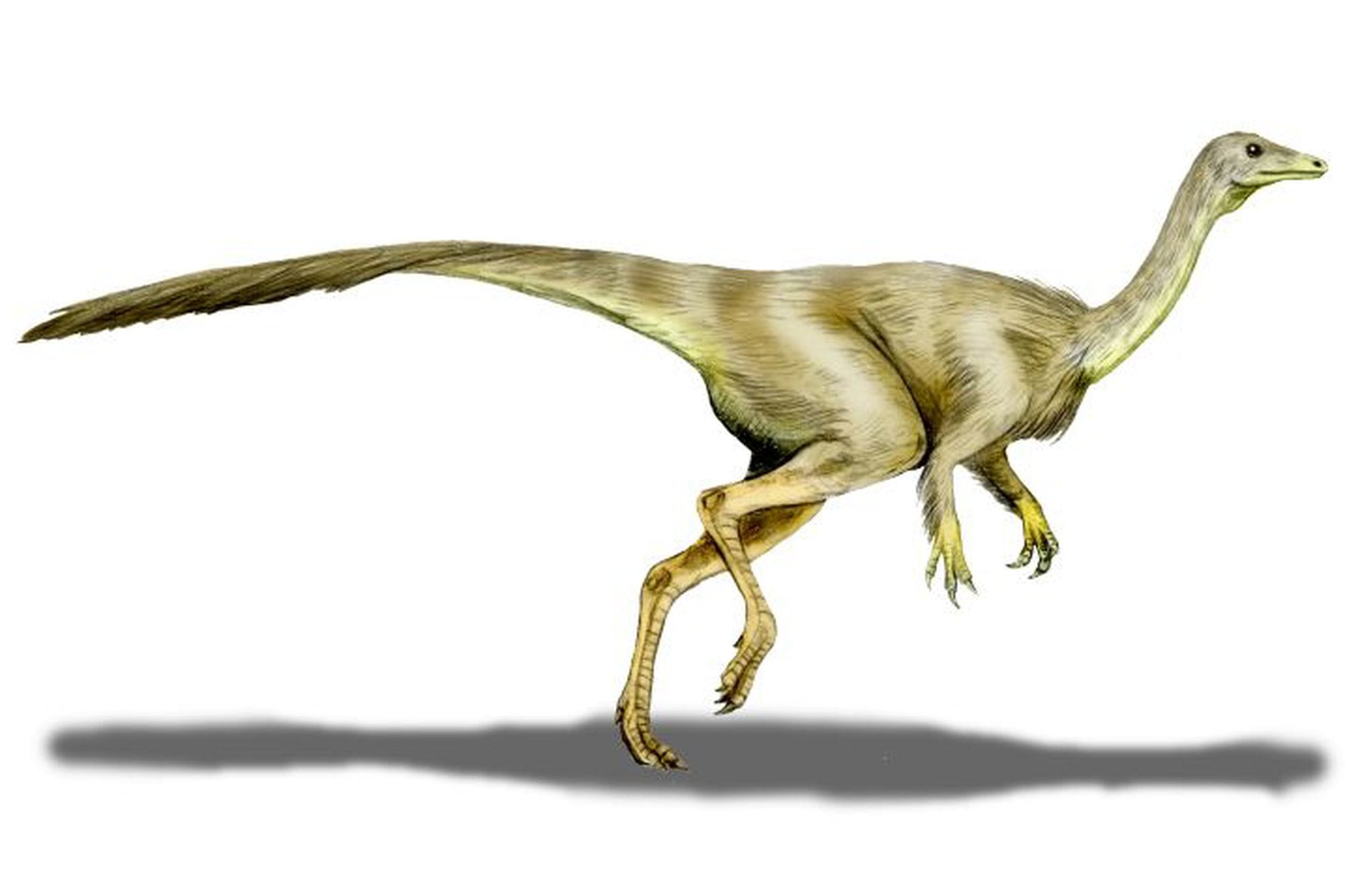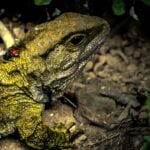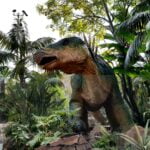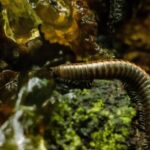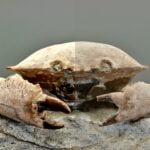Dinosaur enthusiasts, prepare to encounter Struthiomimus, the remarkable “ostrich mimic” that inhabited our planet during the Cretaceous period. This agile herbivore possessed a captivating array of features that set it apart from other dinosaurs. Join us as we delve into the world of Struthiomimus and uncover the captivating secrets of this prehistoric speedster!
Unveiling the “Ostrich Mimic”
Meet Struthiomimus, a dinosaur that continues to intrigue scientists today. This fascinating creature, aptly nicknamed the “ostrich mimic” due to its uncanny resemblance to its modern-day counterpart, roamed the earth millions of years ago. Imagine a creature with long, powerful legs built for speed, a slender neck gracefully held high, and a small head with large, alert eyes—the perfect predator evading machine!
Built for Speed
The “ostrich mimic” moniker is well-deserved. Struthiomimus possessed a sleek, bird-like body similar to a modern ostrich. Imagine this: long, powerful legs designed for sprinting across prehistoric landscapes, a slender neck held high, and a small head with large, watchful eyes. This dinosaur was likely capable of outpacing even the fastest human!
The Enigmatic Diet of Struthiomimus
One of the most perplexing questions surrounding Struthiomimus is its diet—it’s like trying to decipher a prehistoric puzzle! Some experts suggest it might have been an omnivore, consuming both plants and animals, making it a scavenger of its time. Others believe it might have maintained a strict herbivorous diet, using its toothless beak to graze on vegetation. The debate continues as researchers analyze fossils and gather clues to decode the Struthiomimus menu.
Discover the diverse world of arachnids in the spiders of northeastern pennsylvania and learn about the hidden gems of nature.
Life in the Fast Lane
If we could travel back to the Late Cretaceous period, between 66 to 100 million years ago, we would find Struthiomimus thriving in the lush coastal plains and forests that covered much of what is now North America. This dinosaur was a speedster, reaching speeds of up to 50 miles per hour, like a cheetah on two legs! This incredible speed was its secret weapon against formidable predators, such as the terrifying Tyrannosaurus Rex. It’s likely that Struthiomimus lived in herds, a strategy that would have increased their chances of survival by making it harder for a predator to target an individual within a large group.
Beyond the Ostrich Resemblance
While its speed and resemblance to ostriches are its most recognized traits, Struthiomimus had other fascinating characteristics. Take its long, claw-tipped fingers, for instance. These weren’t merely for show! Paleontologists suggest these claws may have been useful for grasping and manipulating objects, including food.
Here’s another intriguing detail: a 2001 study revealed something remarkable about Struthiomimus foot bones. Unlike modern ostriches, which often exhibit stress fractures in their feet due to their high-impact running style, Struthiomimus bones showed no signs of such damage. This suggests that this dinosaur may have moved with a smoother, more gliding gait.
The Feather Debate
Did Struthiomimus have feathers? This question excites paleontologists! While direct fossil evidence of feathers has yet to be discovered, we know that Struthiomimus was closely related to other dinosaurs that definitely possessed them. Therefore, it’s plausible that our ostrich mimic was also adorned with feathers, perhaps for insulation, display, or even to aid in balance. It’s an exciting possibility, and future discoveries may reveal the truth!
A Story Still Unfolding
Struthiomimus, the rapid “ostrich mimic” of the Cretaceous period, continues to fascinate and intrigue us. Its unique adaptations, mysterious diet, and the possibility of concealed feathers all contribute to its allure.
One thing remains certain: as scientists continue to unearth new fossils and analyze existing ones, the story of Struthiomimus will continue to evolve. We can anticipate learning even more about this incredible dinosaur in the years to come, enriching our understanding of the incredible diversity of life that once flourished on our planet.
Unveiling the Diet of Struthiomimus: A Comprehensive Analysis
While its resemblance to the herbivorous ostrich might lead one to assume a plant-based diet, Struthiomimus was likely more adventurous when it came to mealtime. This dinosaur, with its beak, long neck, and powerful legs, was not afraid to diversify its palate. Evidence suggests that Struthiomimus was an omnivore, meaning it enjoyed a varied diet of both plants and animals. This adaptability provided a significant advantage in the survival game, especially when environmental changes impacted food availability.
You might wonder how a toothless dinosaur could consume such a range of foods. Its beak was a multi-purpose tool, perfectly suited for stripping leaves, plucking fruits and vegetables, and even snatching small creatures.
So, what was on the Struthiomimus menu? Scientists have unearthed fascinating clues by examining fossilized remains and considering the dinosaur’s habitat. Here’s what a Struthiomimus meal might have included:
- Small Mammals: Early mammals, such as shrew-like creatures, and possibly even baby dinosaurs.
- Reptiles: Lizards and other small reptiles.
- Amphibians: Frogs and salamanders.
- Insects: A good source of protein.
- Invertebrates: Worms, grubs, and other invertebrates.
- Plant Material: Leafy greens, soft fruits, and vegetation.
The abundance of Struthiomimus fossils found in locations like Dinosaur Provincial Park suggests these dinosaurs were incredibly successful. Their ability to adapt and thrive, likely due in part to their flexible diet, made them true survivors of their era.
Are Ostriches Related to Struthiomimus? Unveiling the Truth
The resemblance between ostriches and Struthiomimus is striking—long legs, long necks, both flightless. They look like they could be close relatives. But are they?
While not directly related, their remarkable similarity is a testament to the power of convergent evolution. This phenomenon occurs when unrelated species develop similar features in response to similar environmental pressures and challenges.
Both ostriches and Struthiomimus needed speed to evade predators, hence the powerful legs. Their long necks were likely advantageous for reaching high into trees for food. It’s like nature saying, “If it works, why not try it again?”
However, it’s essential to remember that they were distinct creatures. Struthiomimus, for example, possessed long claws on its hands, which scientists believe were used for grasping objects or digging. Its beak also had a different shape than an ostrich’s—more concave. So, while they might have shared a similar lifestyle, driven by their environments, Struthiomimus was a unique species.
The beauty of paleontology is that we’re always learning! New discoveries and ongoing research continually refine our understanding of dinosaurs like Struthiomimus, and who knows what other fascinating connections we might unearth in the future?
Explore the captivating beauty of the starburst lily tattoo and uncover the hidden meanings behind this exquisite ink.
Was Struthiomimus a Theropod?
Struthiomimus’s resemblance to an ostrich has earned it the nickname “ostrich mimic.” But appearances can be deceiving. To determine if this intriguing dinosaur was indeed a theropod, we need to examine its skeletal structure and lineage.
One of the first things we notice about Struthiomimus is its bones—they were hollow, just like a bird’s. This is a significant detail because hollow bones are a classic theropod characteristic. Additionally, Struthiomimus had three-toed feet with sharp claws, ideal for a quick escape or snatching a meal. And let’s not forget that long, graceful, S-shaped neck—another hallmark of the theropod family.
If we look at the dinosaur family tree, we find Struthiomimus grouped with the Ornithomimidae, a group of dinosaurs that shared that same bird-like appearance. And the Ornithomimidae were firmly settled within the theropod lineage.
But what about that toothless beak? All those fierce theropods like T. rex had massive teeth. This feature, while unusual for a theropod, might hold the key to understanding Struthiomimus’s adaptability.
Evidence suggests that Struthiomimus was an omnivore, able to eat whatever was available. Its beak, although lacking teeth, would have been perfect for stripping leaves, consuming soft plants, and perhaps even snatching insects or small animals.
So, was Struthiomimus a theropod? All the evidence—its skeletal features, lineage, and even that unusual beak—strongly indicates that it was. Struthiomimus reveals the incredible diversity within the theropod world, showcasing a fascinating range of diets and lifestyles. What other secrets might these amazing dinosaurs be hiding, waiting to be discovered?
